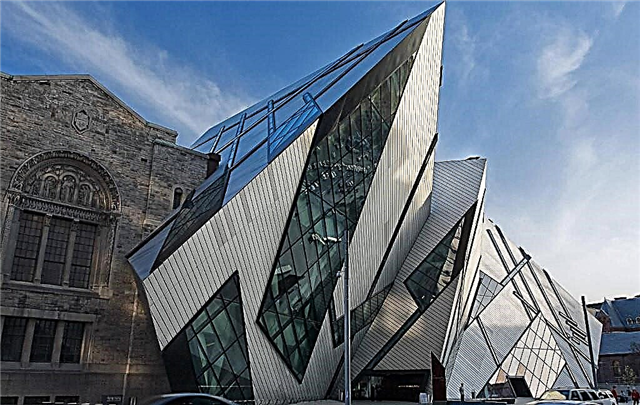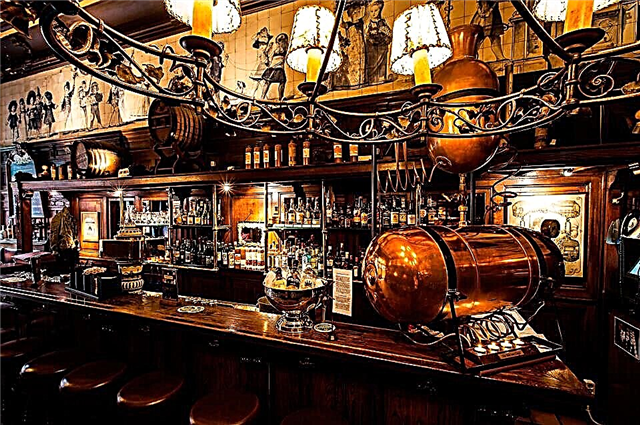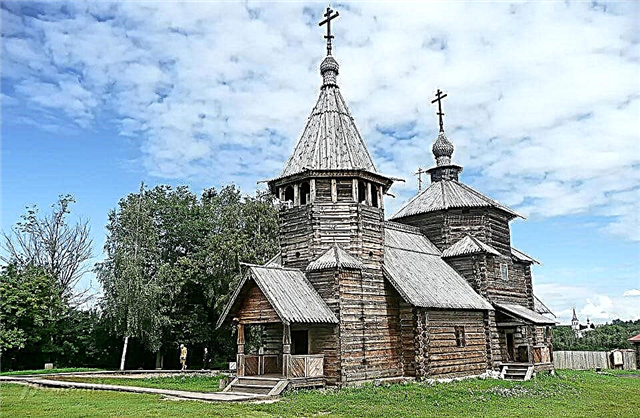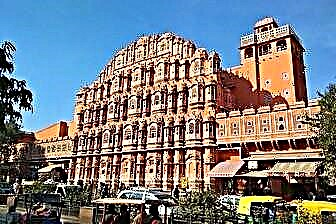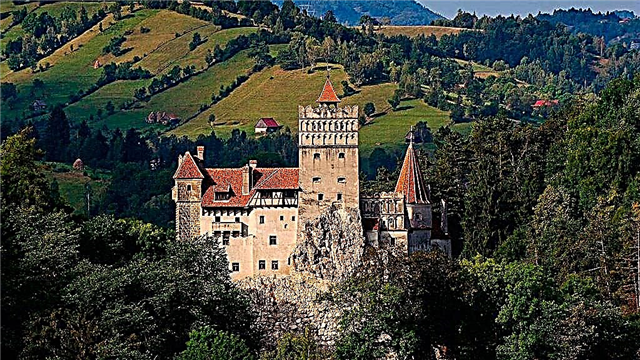Transylvania. This word immediately gives rise to the image of a fantastic corner of the earth with stunningly beautiful landscapes. Clouds and fog, enveloping seemingly sleeping mountains, beckons our thoughts into a mysterious fairy tale with magical castles, cobbled streets of ancient cities and singing gypsies. Reality, bordering on fantasy, has been transported from time immemorial to the present day.
Transylvania is the birthplace of Count Dracula
Our imaginations, created over the centuries, regard this place as the birthplace of the greatest of literary characters, Count Dracula. The vampire, changing his appearance and thirsting for human blood, has been living in the legends of many European peoples for several centuries, and the mysterious forests of Transylvania are considered to be the abode of evil and chilling horror.
At the end of the 19th century, an old Saxon pamphlet about the bloody atrocities of the Prince of Wallachia caught the attention of the Irish writer Brem Stoker, who was writing horror novels at the time. Trying to find a name for this evil, he went to Transylvania - a place of terrible secrets. The novel "Dracula", which appeared from the pen of Stoker in 1897, became "confirmation" of the existence of vampires and ghouls. He only strengthened this myth in the minds of people. To his friend, a Hungarian scientist, who gave Stoker material about the cruelty of Prince Vlad, the writer assigned the role of a fighter against vampires in the book and gave him the name Van Helsing. The story of the Prince of Darkness has undeniably become the prototype for all books, plays and films about mysterious vampires.
[tp_calendar_widget origin = MOW destination = BUH responsive = true subid = ””]
Despite the fact that legends of vampires were formed throughout eastern Europe, Stoker could hardly have found a better place for his prince of darkness. He chose Transylvania, because in those days it was practically unknown and mysterious to anyone. And Dracula's castle was located in a remote mountainous corner on the Borgo Pass. Of course, much in the book has been changed and invented. In reality, Dracula had a princely title, and was not a count, and he ruled in Wallachia. The only portrait of the prince, painted during his lifetime and surviving to us, proves that his appearance is far from a fanged vampire.

Now there are millions of fans of stories about Dracula. Vampire societies have sprung up all over the world. People are attracted by the mystical life force of human blood and the very idea that it allows them to live forever.
History
Medieval Wallachia is a small principality on the border with Transylvania. Small towns, which appeared several centuries ago, are torn down by giant mountains and the fog surrounding them. It seems that just such a place should become the abode of vampires, but in Romanian legends and horror stories, no one frightens with bloodthirstiness.
Prince Vlad Dracula in reality was a terrible character. He is one of the clearest examples of human cruelty. This terrible portrait began to be "painted" during the prince's lifetime, and artificially, out of revenge. Rumors about the bloodthirstiness of Vlad III the Impaler were sparked by the Saxon boyars, who were punished by the ruler for failing to comply with his strict laws. It was at this time that the future image of the prince of darkness was born. The assertion sounded that the prince is the Devil! He ruthlessly destroys his people, burns crowds of captives, tortures even babies and feasts among the numerous corpses of those executed. It seemed that there would be no end to gossip about these horrors.
Today, there are millions of fans of the story about Dracula. All over the world "vampire societies" have sprung up. The main route of their regular pilgrimage to Romania usually starts from the small medieval town of Sighisoara. The world congress of the Dracula Society meets here four times a year. The memory of the ancestor is honored on it: they study the details of his life, discuss and separate the truth from fiction. Tourists from all over the world are attracted by a modest medieval building on one of the narrow streets of this city. House where Count Dracula was born.
Vlad III's birthday was the day his father was admitted to the Order of the Dragon. Members of the secret society swore on blood to defend the Christian faith and save their people from the invading Turks. The book Count Dracula was later dressed in a black long cloak, which the members of the order were supposed to wear.
In addition to Vlad, the ruler of Wallachia had two more sons, but later fate was not favorable to everyone. The elder Mircea will be buried alive, the younger Radu will become a hostage in captivity of the Turkish sultan and will turn out to be a traitor, and Vlad will gain the unkind glory of a bloodthirsty tyrant.
In the house where the little prince saw the light, today a small restaurant is open to visitors. Tourists are attracted by the interior stylized as vampire housing. And the menu certainly includes meat with blood and huge plates with the Dracula's family coat of arms. They also managed to preserve a fresco depicting Vlad's father Dracula. It is over five centuries old.
Tourism development
The emergence of the image of Dracula marked the beginning of the rapid development of tourism in Romania. Thousands of people from different countries wish to visit the castle of Count Dracula, and Romanian tour operators are happy to demonstrate these places. Here you can walk along the historical and movie paths of the vampire of all time, taste baked rats and visit the rooms of fear. You will be shown dozens of castles, the history of which allegedly came into contact with the name of Prince Tepes. And you won't know that most of them Dracula has never been. They were built later.
The coronation of Vlad Tepes took place in Targovishte - the capital of Wallachia and the residence of the heirs of Mercia the Great. In the throne room of the castle, Vlad Dracula received the title of Prince of Wallachia. The coronation took place on a large scale, and it is from the ancestral castle of Targovishte that Vlad will rule the country most of the time. But the tourism brand of Dracula's Castle is accented at a different historical site. This is Bran Castle, located an hour's drive from the city of Brasov, the medieval heart of Transylvania.
You can familiarize yourself with other sights of Romania in our article.

Castle several centuries ago
Brasov was a key city in those troubled times. All routes between Europe and Asia Minor passed through it. In 1395, Vlad's grandfather Mercia gave the authority to Brasov to collect tax on all goods passing through the city. It was Bran Castle that was used to collect duties and protect the trade route. It was built as a Crusader fortress in the 12th century and served to prevent Muslim invaders from using Brasov to invade Europe.
The decoration of the castle was simple and majestic at the same time. The castle consisted of four towers located around an irregularly shaped courtyard. The slope of the roof of the inner buildings of the castle was calculated so that in the event of a shell hit, it would pass tangentially, rather than piercing the roof through. The irregular arrangement of towers and battlements at different levels is a consequence of the fact that the castle stands on a rock. The eye cannot distinguish the border, where the rock ends, and where the building itself begins.
Excursions to the castle
Rivers of tourists and pilgrims climbing the mountain will not let anyone go astray and will lead directly to the chambers of the castle. It was in the chambers of the castle, and not Dracula, as the imagination draws. The prince never lived here, and even, according to the time of the ruler's stay in this place, legends differ. But the entourage preserved in the castle paints a gloomy illustration of life in those distant times. Knightly armor and ammunition, antique carved furniture, skins of trophy animals, silver and gold dishes, massive oak doors that keep centuries-old secrets, bottomless wells and torture rooms of the castle carry away thoughts in the time of smoldering torches and groans of dungeon captives.The emotional climax for tourists is the panic rooms, a kind of entertainment that clearly increases the heartbeat of visitors.
Luring the tourist flow, Romanian guides attribute the presence of Prince Dracula to almost every castle that stands along the route of the excursion route. But we must pay tribute to history and say that the main residence for the ruler of Wallachia was the Poenari fortress. Back in the 13th century, Tepes' grandfather Mircea Stary laid the foundation of this castle. And Vlad, using his nobles instead of slaves, completed and strengthened it. During construction, more than 200 nobles were impaled, died from the heat, or crashed in the mountains. During the reign of the bloody prince, Poenari was his refuge. The garrison of the castle was measured in hundreds of soldiers. The three-meter-high walls were reinforced with bricks to withstand enemy cannon fire in the event of a possible siege.

Ruins of Poenari
A narrow winding road leads to the ruins of Poenari, around only mysterious mountains and fog. The fortress is located on a high inaccessible peak, and to get there, you need to overcome 1,500 steps. Each step of this dizzying ascent brings the pilgrims closer to that terrible time when human life had no value. The eerie mannequins on the stakes that accompany climbing the stairs carry the imagination in times of fierce battles, secret conspiracies and fearless defenders of Orthodoxy.

Saving the beloved
The fortress kept the hardships of the state of siege for several months. And it was here that the prince was secretly able to ferry his beloved Lydia, saving her from the reprisals of the local boyars. But the forces in this war were unequal, and the end was inevitable. Clearly realizing that Turkish captivity was tantamount to death, Lydia saved her honor and freedom by stepping into the abyss from the cliff. In Romanian legends about his legendary warrior-prince, there are assumptions that it was after the loss of his beloved that the prince sold his soul to Satan. This was the day when the time of victories and successes ended for him. He escaped from the castle through an underground passage, but his life was destroyed. Death did not look for Vlad for long, and got to him in a fair fight.
The last refuge for Vlad III the Impaler was the Snagov Monastery, which he had previously founded. He was buried by monks. But many could not believe in the death of the prince, and the desire to open the grave tormented the minds of the curious for several years. When, nevertheless, the grave was opened, it turned out to be empty. Rumors about the prince's immortality spread again. No one then could have imagined that it was the monks who took care of the last peace of the prince. They reburied the body of the ruler, hiding it under a stone slab at the entrance to the church. This is an ancient Orthodox custom: the deceased will atone for his earthly sins if parishioners “trample on” his ashes.
Several centuries have passed, and time is the best judge. And now the accursed prince has regained the status of a national hero and a just ruler of his country. The only people who always remembered him with nostalgia were the Romanian peasants. At all times, they told the legends that during the time of Prince Dracula, mamalyga porridge was cooked not in water, but in milk. It was cheaper than water!
If you are interested in the history of unusual castles, then we recommend reading the article - Castle of Frankenstein.



